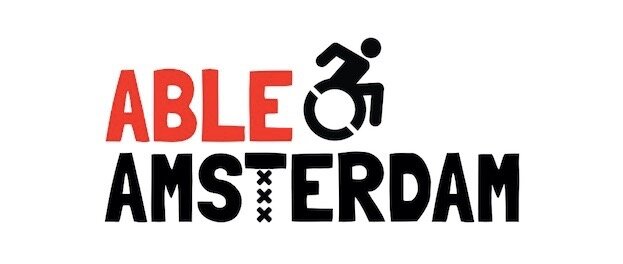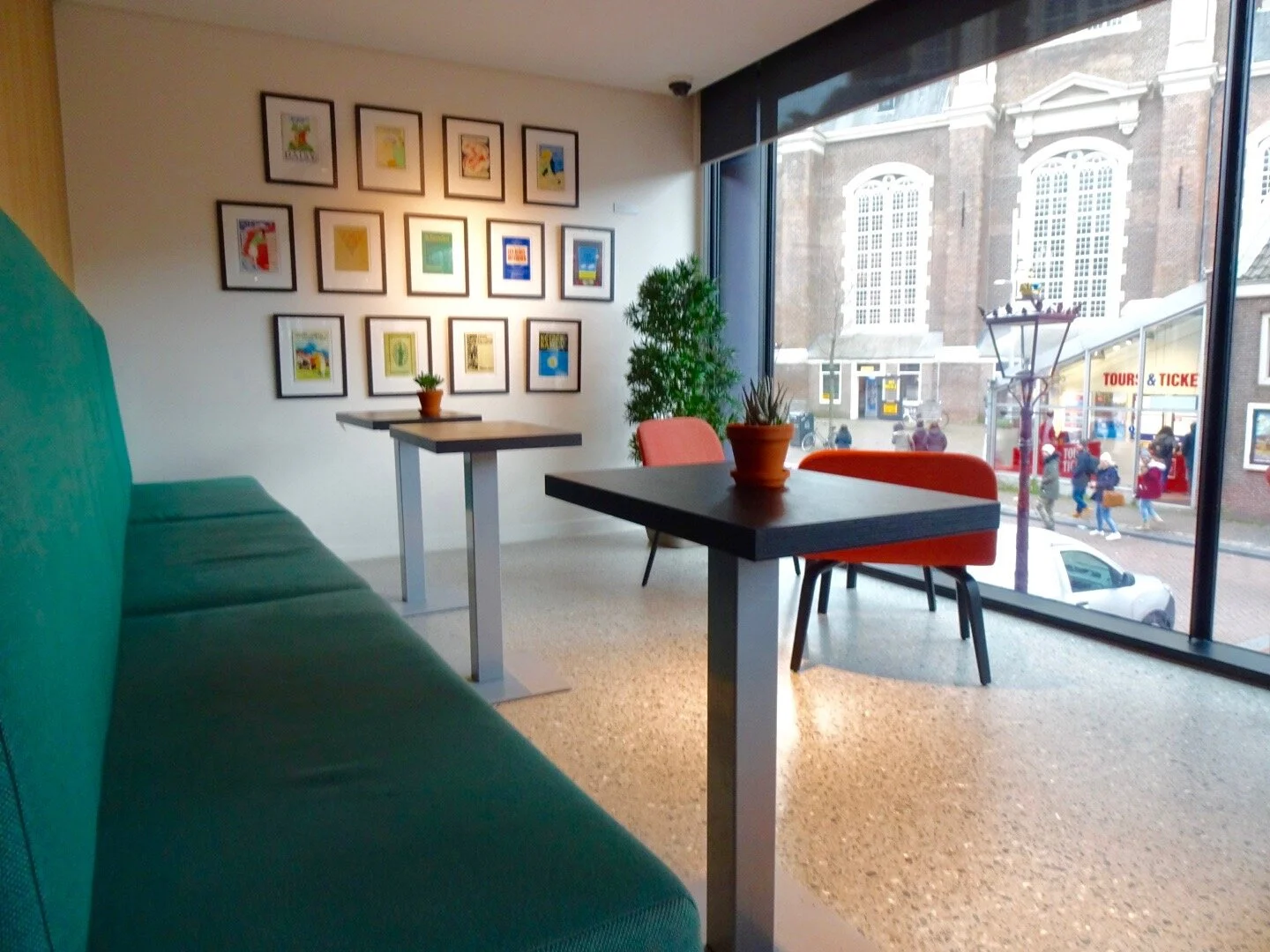How wheelchair-friendly is the Anne Frank House?
Anne Frank. Courtesy of the Anne Frank Museum.
Over the past few weeks, I’ve received a lot of questions about the accessibility of the Anne Frank House. After reading the official museum website section about wheelchair access, I was eager to experience how wheelchair-friendly this museum is for myself. Below you’ll find my personal observations based on a recent trip in my wheelchair.
But first: Who was Anne Frank?
Anne Frank was a young German-born Jewish girl who kept diary accounts of her time in hiding during the German Occupation. Anne used her diary to document daily life, thoughts, and aspirations. While Anne did not survive World War II, her diary was later published. It became one of the most-read books in the world. The place of hiding (The Secret Annex) has since been turned into the world-famous Anne Frank House. Click here for more information about Anne Frank’s story.
Arriving in my wheelchair
It was a chilly February afternoon when I rolled up to the Anne Frank House with a friend. We were met by a crowd of other visitors. Thanks to the online ticket booking system* the queues weren’t too bad – but it was busy nonetheless.
The main museum entrance is located down a set of stairs. To reach the accessible side entrance, I had to signal the attention of one of the outdoor staff members. A friendly guy soon walked over, mumbled into his walkie-talkie, and guided us to a nearby step-free entrance.
* Tickets must be purchased several weeks/months in advance on the Anne Frank House website.
The entrance to the Anne Frank House.
Inside we were led to a staff-operated lift. We whizzed up to the main reception, beeped in our tickets, and deposited our coats in the cloakroom.
Off I went to the accessible side entrance. A friendly museum representative helped me, unlocked the door and showed me the way inside.
At this point, my friend and I had to part ways for the first half of our visit. My friend was able to join the crowds to see the original part of the museum. This includes the Secret Annex, where Anne and the others went into hiding. As the original part of the museum can only be reached up a steep staircase, it isn’t wheelchair accessible. I waved a quick goodbye to my friend and took the lift straight up to the modern part of the museum.
I’ll admit it was a shame to miss seeing the Secret Annex in person. However, I understand why the museum has opted not to install a lift there. It’s a small space with authentic wartime features. Original walls covered in Anne’s 1940s magazine cutouts. Original partitions, bedrooms, bathrooms, and places lived in by Anne and others. Much of this authenticity would be lost in the process of renovations for a modern lift.
The Virtual Reality tour
Fortunately, visitors with reduced mobility can still “experience” the Secret Annex through a 25-minute Virtual Reality tour. With a special headset, headphones, and remote control, I could see inside the original museum without actually being there in person.
I’d definitely recommend the Virtual Reality tour. My only critique was that there wasn’t a designated quiet space other than the museum cafe. While the headphones drowned out most surrounding noises, I still heard the faint noise of clinking of glasses, cutlery, and visitors in the background. This affected my ability to fully immerse myself in the experience.
Experiencing the Anne Frank House Virtual Reality tour from the comfort of my own wheelchair
The modern museum
After the Virtual Reality tour I was reunited with my friend in the modern part of the museum. Here, almost all items were displayed in low cabinets easily visible from my wheelchair. I was able to look through original documents, letters and photos related to the Secret Annex. Various interviews and video clips were played on a big screen.
To my shock, Anne’s original diary was not accessible. Despite being in the modern museum, the diary can only be seen down three steps. There’s plenty of space for a ramp. And yet there isn’t one. I honestly can’t believe that the most symbolic item of this entire museum isn’t available for everyone to see.
I am currently in discussion with the Anne Frank House about improving the accessibility of Anne’s original diary. It’s my mission to get a ramp in place so that the modern part of the museum caters to the physical capabilities of all visitors. (More updates to follow.)
The closest I could get to the diary of Anne Frank, while crowds of people who could walk down 3 steps got a close-up
Three steps rendering Anne Frank's diary inaccessible
Museum gift shop & cafe
The modern part of the museum has a spacious gift shop selling books, postcards, and various other items. “Anne Frank: The Diary of A Young Girl” can also be purchased here in multiple languages.
While all the products can be viewed from a wheelchair, you may need to ask for assistance if you’re buying something off a higher shelf.
Finally there’s the museum cafe. This too is accessible. There is plenty of space to maneuvre, with low tables, comfortable chairs and tasty treats. As the cafe is self-service, however, wheelchair users may need assistance to simultaneously carry their tray and operate their wheelchair.
A spacious cafe with low tables and comfortable sofas is easily accessible for visitors with reduced mobility
A spacious accessible toilet is located on one of the lower floors. You'll need to ask a member of staff to accompany you down/up via the lift.
Toilet
A spacious wheelchair-friendly toilet with grab rails is located on one of the lower floors. You’ll need to ask a member of staff for assistance, as this toilet can only be reached via a staff-operated lift. The same member of staff will accompany you back up to the museum.
The mirror, sink, toilet rolls, and emergency cord are at the correct height. During my visit, the facilities were well-stocked and clean.
* To leave the museum building at the end of my visit, I also had to ask a member of staff to operate the lift.
Conclusion
The Anne Frank House has limited accessibility. The original hiding place and diary are inaccessible to guests with reduced mobility. However, the available Virtual Reality tour offers an alternative way to “experience” the Secret Annex. Despite not seeing the original hiding place and diary, I still found my visit very informative and moving. Ultimately, I leave it to you to decide if this level of accessibility meets your expectations of a visit to the Anne Frank House.








